Shimla: A small mosque in Shimla’s Kasumpti sits deserted under tarps, with two policemen standing guard. No one dares to pray here anymore. Since last month, Hindu groups have campaigned to tear it down. It’s part of an unprecedented anti-mosque campaign in Himachal Pradesh, where several structures are being branded ‘illegal’ and accused of harbouring ‘outsiders’.
A new kind of politics of anxiety is taking shape among some Hindus of Himachal Pradesh. And mosques are the flashpoint around which Hindu radical groups are getting galvanised. In Kasumpti, protesters claimed that a house had been illegally converted into a mosque, and ‘suspicious’ people were gathering there. The mosque was sealed on 17 September after protests broke out.
“We want Himachal Pradesh to set the precedent for targeting mosques and reclaiming space,” said Madan Thakur, co-convenor of the Vishva Hindu Parishad’s Devbhoomi Sangharsh Samiti, a newly formed committee dedicated to shutting down ‘illegal’ mosques. “Our temples were demolished, now we are rebuilding. I don’t care what’s breaking yours—I care about my faith.”
The serene tourist-friendly mountain state is now facing a new wave of communal politics that is threatening its very identity. What began as a protest over the expansion of a mosque in Shimla’s Sanjauli locality has quickly spread to other districts, putting about half a dozen masjids in the crosshairs so far. WhatsApp groups are afire with fear, hate, and suspicion. Courts are inundated with petitions and counter-petitions. Protest marches and peace rallies are now a regular street affair even as the administration scrambles to contain the rising tensions.
But more protests are in the pipeline.
On a late September evening, 45-year-old Thakur met three associates at Shimla’s Horizon Hotel to map out their next move— a “Jail Bharo Andolan” to demand action against ‘unauthorised’ mosques and Muslim ‘outsiders.’
They (Hindu organisations) want to send a message— if they can create chaos in a state where the Muslim population is very small, imagine what they will do in other places
-Adarsh Sood, former mayor of Shimla
“The Muslim population and mosques are increasing in Himachal Pradesh. Our associates are identifying the mosques in the state that are built illegally. These mosques are on our target,” Thakur told ThePrint.
The movement gained momentum after a 30 August dispute between two business owners—one Hindu, one Muslim—escalated into communal clashes. Rumours spread that the Muslim man hid out in the Sanjauli mosque. And within a day, this mosque’s expansion to five floors, became a lightning rod for Hindu groups. Soon after, they claimed to have identified similar issues with other Himachal Pradesh mosques.
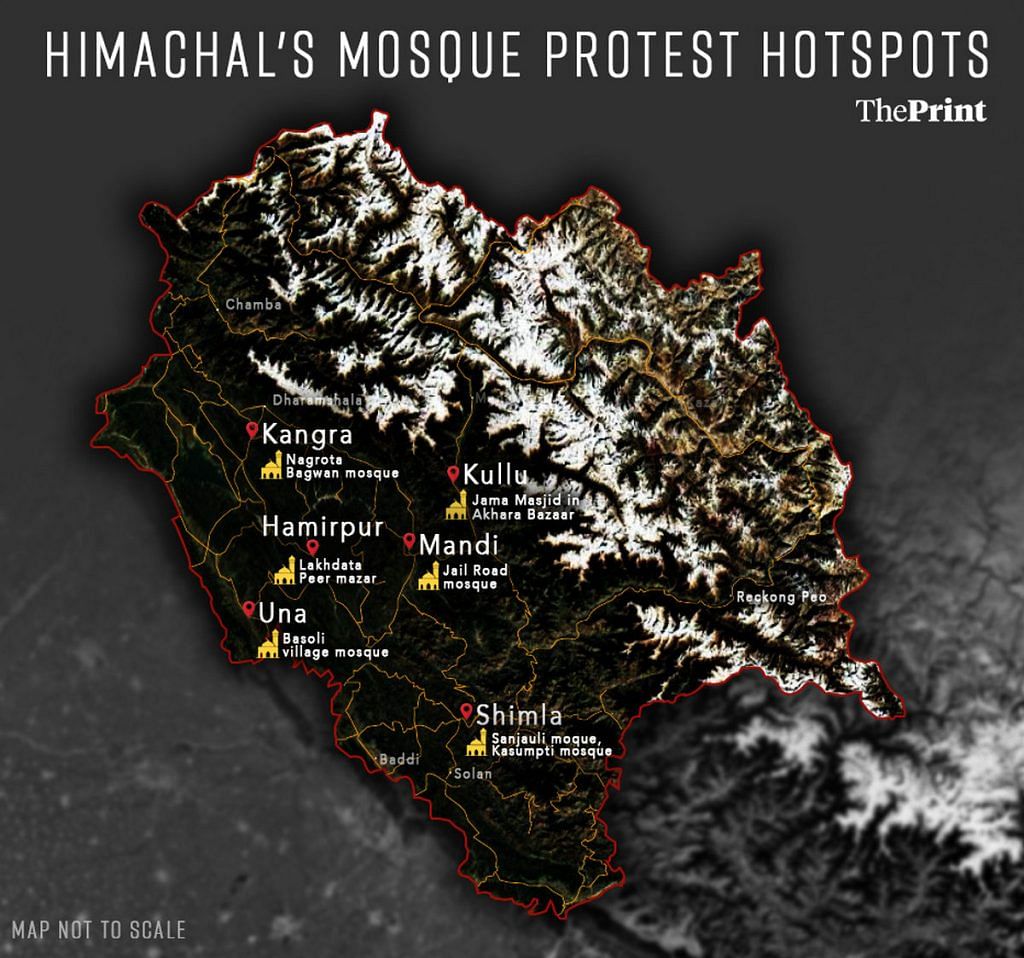
Now, this Congress-ruled state is turning into an anti-mosque hub. Mosques in Sanjauli, Kasumpti, Kullu, Mandi, Nagrota Bagwan, Dharamshala, and Basoli are all under scrutiny, with accusations flying—illegal construction, temple land encroachment, private property being turned into mosques.
Hindu outfits like the Devbhoomi Sangharsh Samiti, Karni Sena, Hindu Jagran Manch, and Bajrang Dal have found fertile ground to expand their influence in the hilly state. Where they once stuck to press releases and statements, now they’re active on the streets.
Thakur credits the movement’s traction to the political crisis in Bangladesh, where attacks on Hindus following Prime Minister Sheikh Hasina’s ousting have stoked anger across the border.
“If the events in Bangladesh hadn’t occurred, we couldn’t have organised such a large movement in Himachal. The atrocities against Hindus in Bangladesh have inspired people, driving them to the streets,” said Thakur with a proud smile.
But not everyone sees it that way. Tikender Singh Panwar, former deputy mayor of Shimla, argued that Hindu groups are turning class and economic issues into religious battles.
“Many local people hire Muslim labourers and refuse to pay them, blaming ‘faults’ in their work,” Panwar said. “Shop owners rent out small spaces to workers in front of their shops but get uneasy when they start doing well. This is a class issue that has been turned into a religious issue by Hindu organisations.”
This isn’t just about religion. What’s really at stake is “market control”, according to Munish Karol, deputy commissioner in Himachal’s Department of Labour & Employment, referring to the mobility of labour from other states.
Also Read: Muslim bodies split over Shimla mosque demolition order. A look at 14-yr-old row & how it escalated
A slap to statewide stir
It all began with the Sanjauli mosque in Shimla.
On 30 August, a fight broke out between two local business owners in the Malyana area. Vikram, a Hindu shopkeeper, allegedly slapped the teenage assistant of Gulnawaz Ansari, a Muslim salon owner, after a heated argument. Things quickly got out of hand, with both sides getting involved, leaving several people injured and arrested. But the real trouble began the next day.
Rumours spread that Ansari and his associates had taken refuge in the Sanjauli mosque. This stirred up political and religious leaders in Shimla, who voiced concerns about the mosque and the growing Muslim presence in the area. Almost immediately, protests were called, starting on 1 September and quickly spreading across the state within the next couple of weeks.
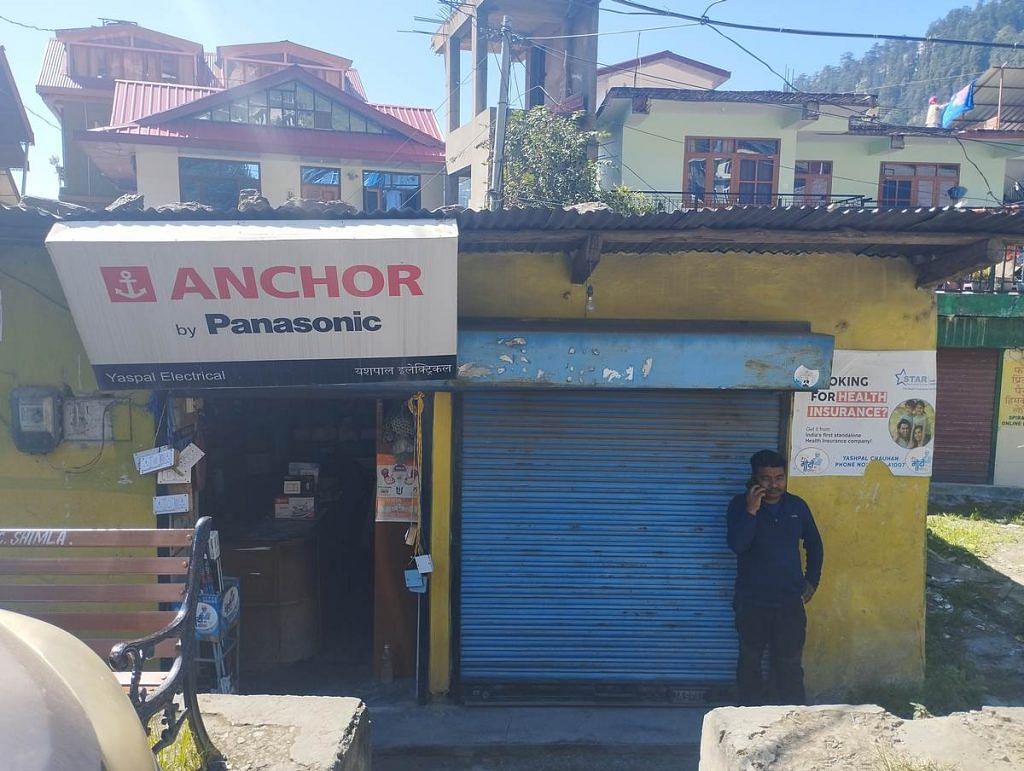
But the Sanjauli mosque row was just the tipping point, according to Madan Thakur of the Devbhoomi Sangharsh Samiti.
His voice rising in excitement, he claimed his group had spent the past year monitoring ‘suspicious’ activities by Muslims. Thakur said they’d found 26 Muslims posing as Hindus, using Hindu names and symbols like Rudraksha beads and saffron cloths. Many, he alleged, were Deobandis from UP’s Saharanpur who were renting shops at double the usual rates.
“Isn’t this land jihad? From where are they getting the funds?” he asked.
Thakur also alleged there’d been incidents of Muslim fruit vendors selling produce to Hindu girls at lower prices while overcharging men— a tactic to “lure” women. He insisted that such incidents were making national headlines and all signs pointed to a Ghazwa-e-Hind masterplan.
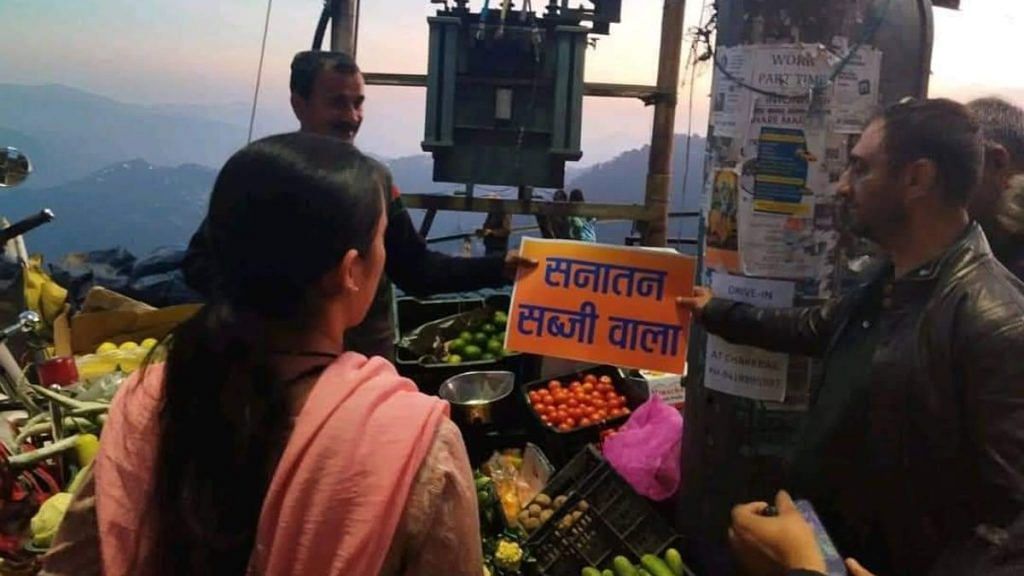
“We are vigilant in the state to monitor whether such jihad is taking place,” he said.
This kind of rhetoric is relatively new in Himachal Pradesh, where communal tensions have been rare.
“Himachal has never seen communal politics before,” said Adarsh Sood, former mayor of Shimla. “Until now, Hindu organisations existed only on paper.”
What has given such outfits “opportunity and strength”, according to Sood, is the construction of the Ram Mandir in Ayodhya. It has emboldened them to extend Hindutva’s reach. And local leaders, including councillors and retired mayors, have joined the cause.
I have observed the mosque since childhood and have never seen any suspicious activity. It’s unfair to target only the mosque when many other illegal structures exist
– Sanjauli resident Ravi Kumar
“They (Hindu organisations) want to send a message— if they can create chaos in a state where the Muslim population is very small, imagine what they will do in other places,” Sood said.
Hindus make up 95.17 per cent of the population in Himachal Pradesh, according to the 2011 Census, with Muslims accounting for 2.18 per cent—only around 150,000 people. Hindus form the majority in 11 of the state’s 12 districts.
There’s no official data on demographic changes since then, but Mohammad Afzal, chairman of the NGO Idara Islahul Fikr Society, estimates a 10 per cent rise in migrant Muslim workers over the past two years. These workers aren’t tracked by government bodies as they’re transient and can’t buy land. Even police verifications don’t track religion or caste.
Most of these workers work in the informal sector, making it difficult to determine their exact population as there is no data record for them
-Munish Karol, deputy commissioner, Department of Labour & Employment
For Thakur, though, pre-emptive action is necessary.
“When the Muslim population is low, they remain quiet, but as their numbers grow, they start to assert themselves,” he said, claiming that the rise in “illegal mosque construction” and “violence” is due to an influx of Muslims. He called for the administration to verify the identities of those arriving from other places, especially Saharanpur—a known hub for artisans supplying wood-carved items to Shimla. A ‘group lobby’ purportedly operates here, with workers from UP providing affordable, quality products through local contacts.
Thakur maintained that he has issues only with Muslims who arrived in the state in the last 25 years, while the rest are welcome.
Even as these anxieties about Muslims gain ground, Shimla’s Superintendent of Police, Sanjeev Kumar Gandhi, pointed out that though migration is putting pressure on resources it has nothing to do with religion.
“Demographics are changing, and this is a problem, but it is irrespective of religion,” he added.
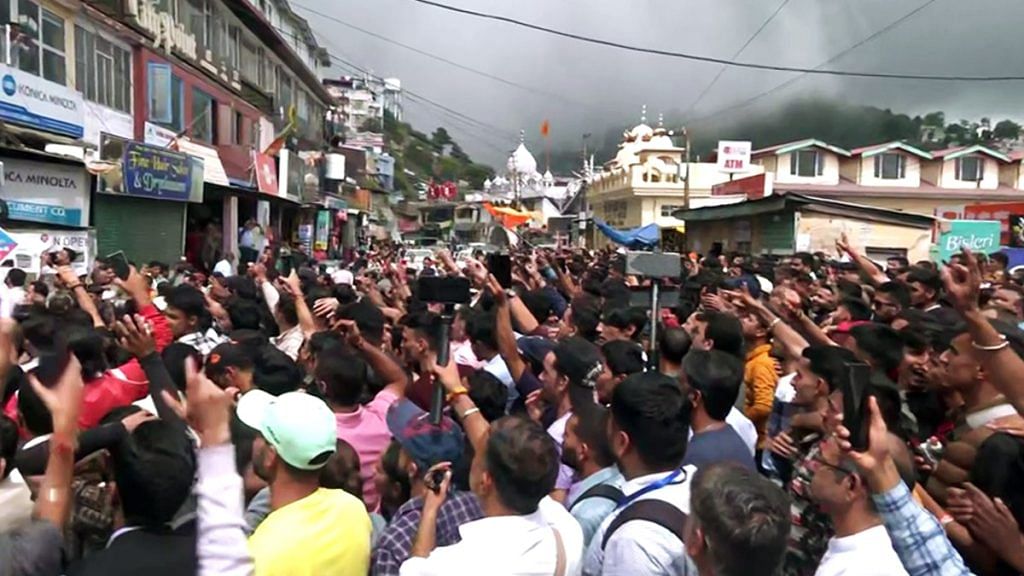
So far, leaders of both the ruling Congress and the Opposition BJP in Himachal have largely agreed on the mosque controversy, calling for the demolition of ‘illegal’ structures.
On 28 September, when the Samiti held a demonstration, Congress councillor Sushma Kuthiala from Ram Bazar/Sabzi Mandi stopped by an expressed her agreement and solidarity with their concerns. Previously, Congress junior minister Anirudh Singh had called for an investigation into Sanjauli mosque, accusing the Waqf Board of encroaching on land.
For Himachal’s Muslim community, the stance of Congress leaders has been a bitter pill. Many had been buoyed by the party’s 2022 state election victory and its better-than-expected performance in the Lok Sabha polls. Now, Congress ministers are accused of stoking communal tensions to protect their Hindu vote base.
Many here argue that if the Sanjauli mosque incident had been handled better from the start, the unrest could have been avoided and wouldn’t have spread to other places, including Kasumpti, 6 kilometres away.
Thakur has his sights set on many new targets. He alleged that around 250 new mosques were built ‘clandestinely’ in Himachal during the Covid-19 pandemic. “If we check their papers they will be stuck in litigation,” he said.
‘Outsiders’ and ownership
Rumours have been swirling around the Kasumpti Mosque for years—namaz being offered even though no Muslim families live nearby, mysterious figures slipping in and out. But the main reason why it was sealed off last month following the protests is a dispute about ownership.
Some residents allege the mosque sits on central government land, which was leased to a Muslim family who sold it in 1990. The new owner, they claim, gradually converted the house into a mosque.
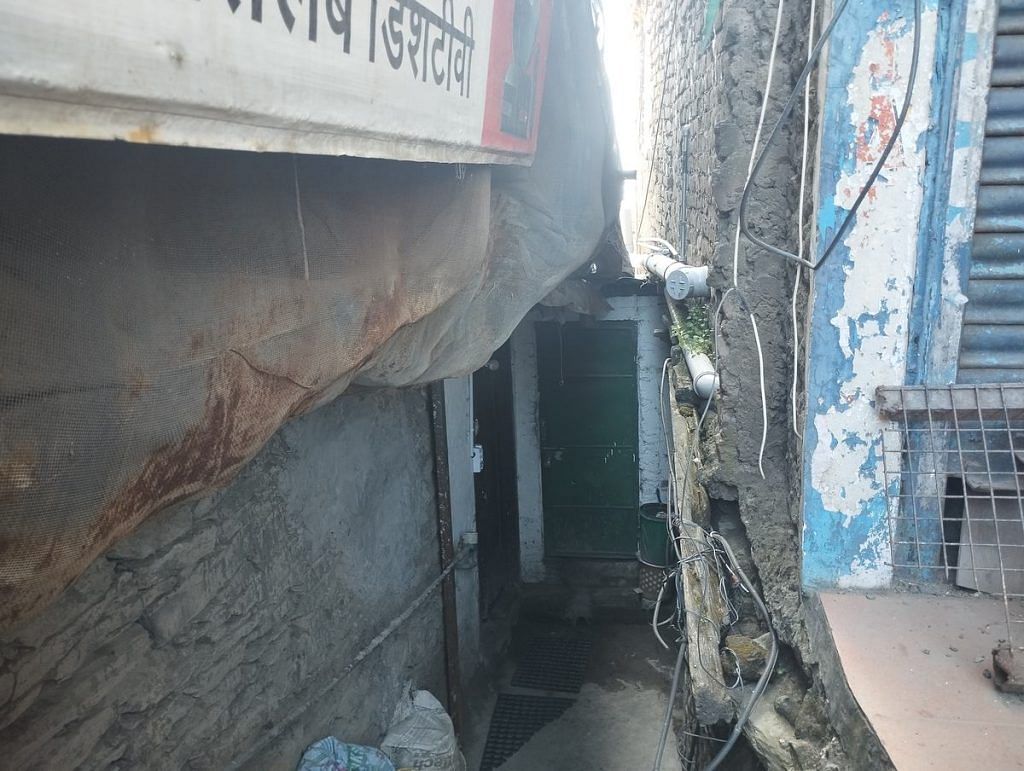
But the story is more complex.
The 1970 Waqf property survey officially recognised the site as a mosque in gazetted records. The paperwork, however, is muddled by administrative gaps.
After Partition, many Muslim-owned properties were taken over by the central government under the 1950 Administration of Evacuee Property Act, which managed assets left by those who moved to Pakistan.
A senior Himachal Waqf Board official said that while some properties were handed over to the board after the 1970 survey, they were never fully removed from government records. Now, Hindu groups argue these properties still belong to the government.
“We have written several times to the Revenue Department to correct these records and remove the central government’s ownership, but this hasn’t been done yet,” the official claimed.
As for the ‘mysterious’ worshippers, a mosque official clarified that workers from nearby areas like Malyana, Chotta Shimla, and Mehli came here to pray since they didn’t have mosques nearby.
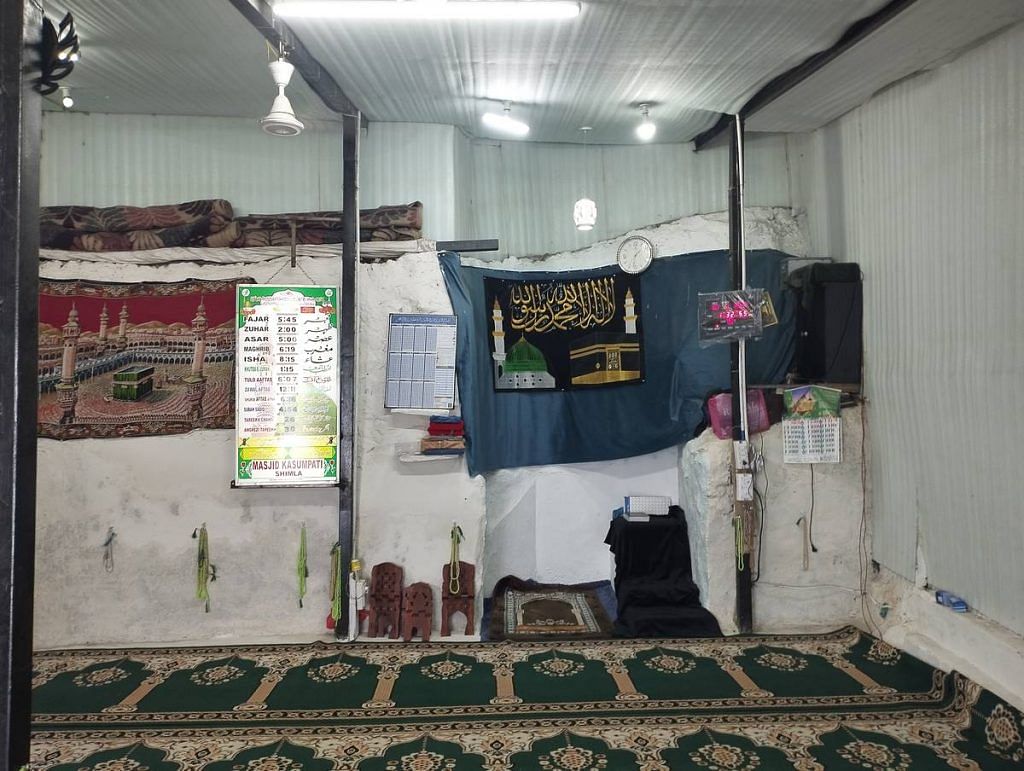
“The building has a prayer niche (mihrab) from which the cleric leads the prayers, indicating that it is a mosque,” he added.
On 17 September, local councillor Rachna Sharma and former deputy mayor and BJP leader Rakesh Sharma submitted a memorandum to the deputy commissioner. demanding the Kusumpti mosque be demolished. They also argued that the Waqf Board Act requires at least 40 Muslim families to justify building a mosque in any area.
The Municipal Corporation Court is expected to rule on the matter on 21 October.
Masjids in the firing line
Sanjauli was the epicentre, but the anti-mosque movement in Himachal Pradesh has spread far beyond Shimla.
Hindu groups like the VHP-affiliated Devbhoomi Sangharsh Samiti have seized the moment and ramped up their activities in the state. The Samiti dusted off its largely dormant social media channels to organise protests, marches, and rallies across districts. Its Facebook page is now full of updates, exhortations to recite the Hanuman Chalisa to make the state government see sense, and boycott calls.
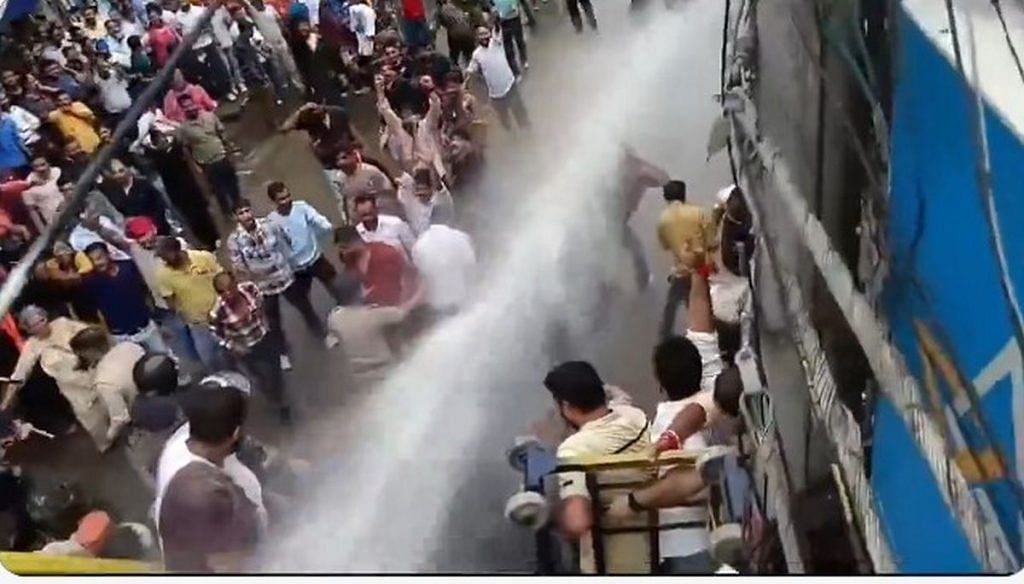
Within days of the Sanjauli incident, protests against ‘illegal’ mosques were erupting across Himachal.
In Nagrota, protesters vandalised a shop. Dharamshala saw business owners march through the streets, shutting down shops. In Una district’s Baroli village, residents questioned why a mosque was built in a place with no Muslim residents. This month, Kullu joined the fray with a large rally. And in Mandi, Hindu groups are preparing to approach the high court over a stay on the demolition of a mosque that they claim is built on the remains of a Shiva temple.
The unrest is doing businesses no favours. Frequent market closures and protests are causing losses and tourism has reportedly taken a hit.
Muslim community divided
As some mosque disputes head to court, divisions have started appearing within the Muslim community.
In the green suburb of Sanjauli, police have barricaded the narrow, steep staircase leading to the five-storey mosque. Around five officers stand guard at the barricades, monitoring everyone entering the area. Another team keeps watch outside the mosque.
The dispute over it goes back to 2010, when the mosque committee built pillars and received a notice from the Municipal Corporation. Although they got a No Objection Certificate (NOC) from the Waqf Board in 2012, the building plan was never officially approved. In 2017, more floors were added, which became the core of the current controversy.
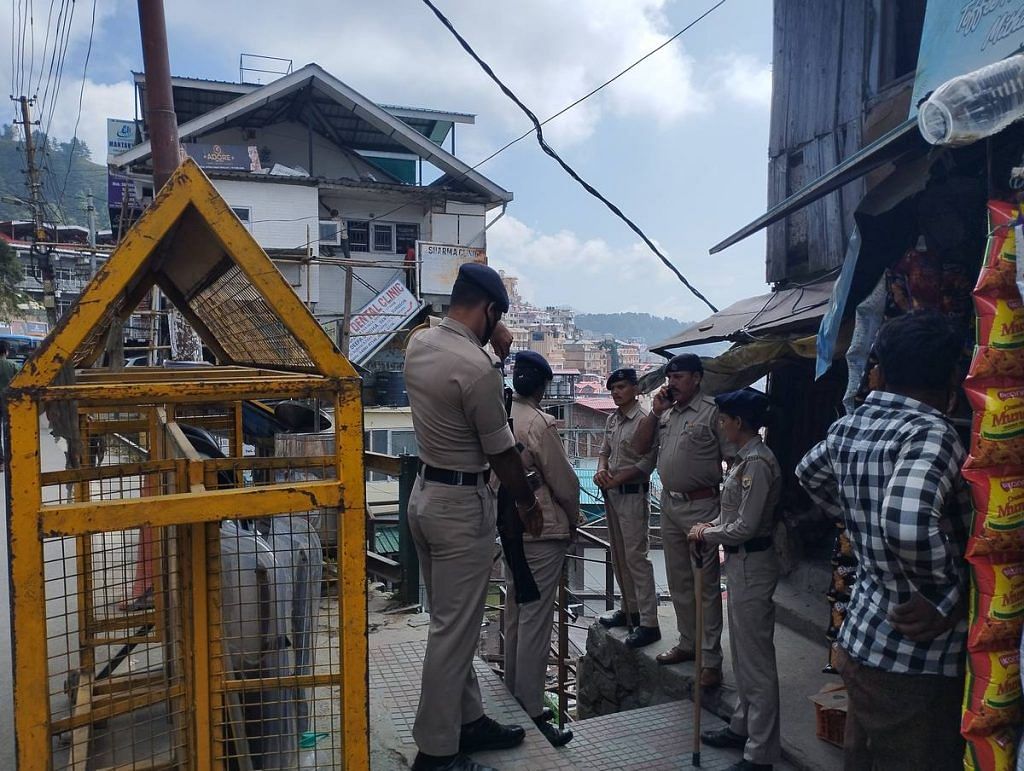
After dragging through the courts for 14 years, things have recently sped up.
On 12 September, following a protest that left 10 people injured, the Sanjauli mosque committee asked the Municipal Commissioner to seal off the unauthorised section of the mosque, offering to demolish it themselves.
Finally, on 5 October—after 45 hearings—the Municipal Commissioner gave the mosque committee two months to demolish the top three floors of the mosque, under Waqf Board supervision.
This plan, though, has detractors.
Mumtaz Ahmed Qasmi, Himachal’s top Imam and chairman of all Shimla mosques, said Muslim organisations plan to challenge the court’s order since it was based on a memorandum submitted by an unregistered mosque committee.
“We will challenge this decision. The court made no mistake, but some in the Muslim community took wrong steps,” Qasmi said. “If this memorandum had not been submitted, the decision would not have been taken.”
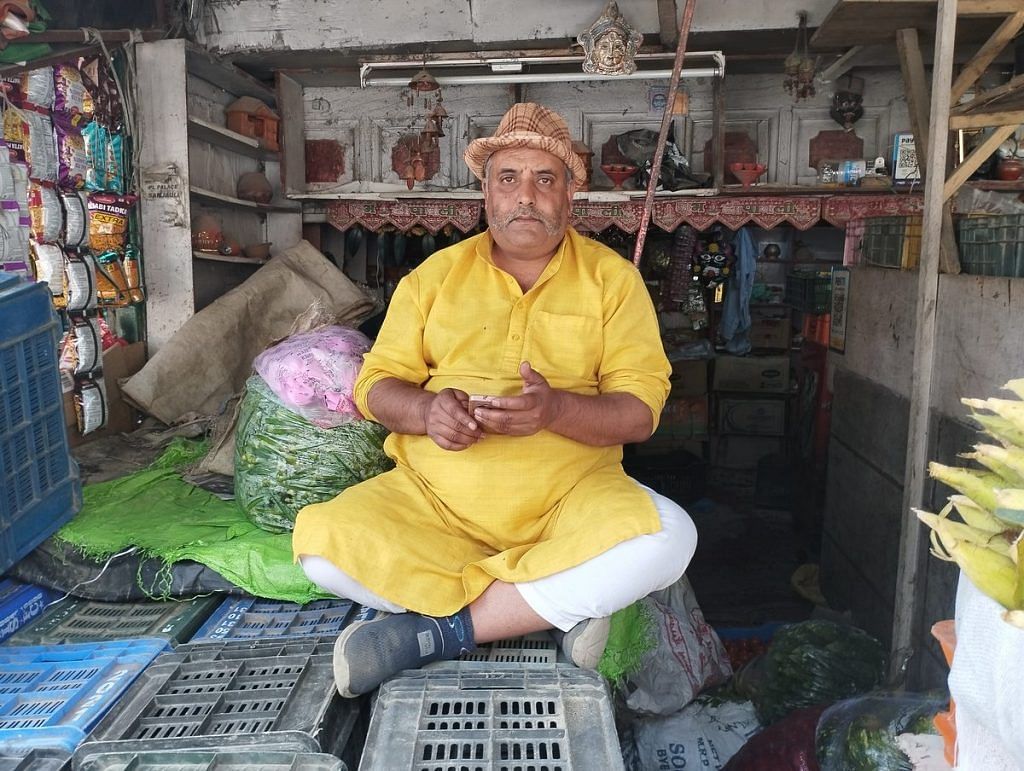
As the controversy rages on, some Sanjauli residents are puzzled by the fuss.
“I have observed the mosque since childhood and have never seen any suspicious activity,” said Sanjauli resident Ravi Kumar. “It’s unfair to target only the mosque when many other illegal structures exist.”
According to a Tribune report, Himachal Pradesh has over 25,000 unauthorised constructions.
But for Hindu organisations, the Sanjauli mosque ruling is a victory. They’re now waiting for a similar court decision on the Kasumpti mosque.
Mosques, migrants, market control
The Himachal anti-mosque movement is only just warming up, according to Madan Lal Thakur.
He claimed that members of at least 500 panchayats are mobilising people against mosques. And that his organisation is running WhatsApp groups at the state, district, and panchayat levels under names like Devbhoomi Sangharsh Samiti 1 and 2. These groups have some 3,500 members sharing protest updates, videos, and pictures of demonstrations. One message, for instance, urged people to turn up in force for a protest at CTO Chowk on 28 September.
Thakur has his sights set on many new targets. He alleged that around 250 new mosques were built ‘clandestinely’ in Himachal during the Covid-19 pandemic, mostly on private properties and without the necessary permissions.
“These are unauthorised mosques. If we check their papers they will be stuck in litigation,” he said.
Since last year, Thakur said he filed around 10 RTI applications to find out about Waqf encroachments, but hasn’t received any responses yet.

A senior Waqf official, however, denied the claim of encroachment.
“The board has not received any new properties since the survey. No one has transferred property to the Waqf in the state. All our properties are 100 percent waqf by user,” he said.
Thakur’s efforts, however, don’t end with mosques. He’s also pushing for a social and economic boycott of Muslims in the state. He argued that for the past 25 years, Muslims from Uttar Pradesh and Bihar have been passing themselves off as Hindus to carry out “land jihad” and grab opportunities in the state.
But this isn’t just about religion. What’s really at stake is “market control”, according to Munish Karol, deputy commissioner in Himachal’s Department of Labour & Employment, referring to the mobility of labour from other states.
While outsiders cannot buy land in the state—the Himachal Pradesh Tenancy and Land Reforms Act restricts land ownership to “bona fide residents” of at least 20 years—it hasn’t stopped people from moving here to set up small shops and grow their businesses. Others, often skilled labourers, come for jobs in the thriving agriculture and tourism sectors.
“Most of these workers work in the informal sector, making it difficult to determine their exact population as there is no data record for them,” he added.
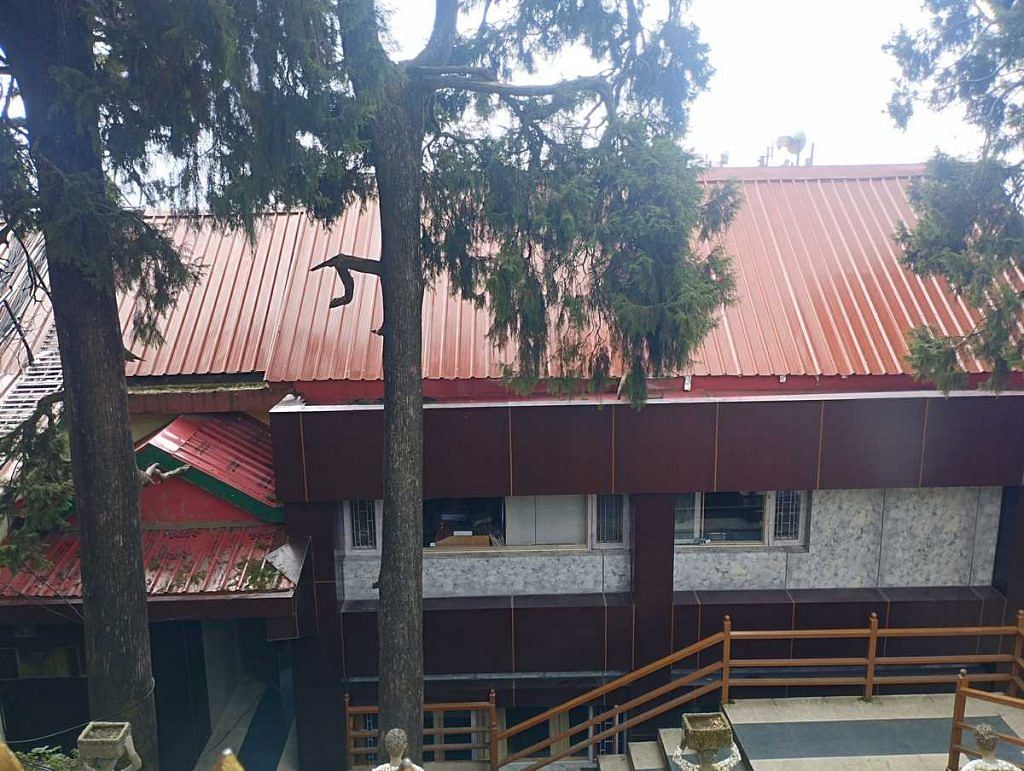
An official associated with Shimla’s Qutub Masjid, who’s lived in Himachal all his life, said he has seen the shift in market dynamics firsthand. Most Himachalis are landowners, and migrants usually fill the labour gaps. But when those same migrants set up shop, competition heats up.
“Workers from outside began selling the same quality goods at lower prices, attracting local customers and strengthening their hold on the market,” he added.
But the unrest is doing businesses no favours either. Frequent market closures and protests are causing losses and tourism has reportedly taken a hit.
“We’re seeing many cancellations and fewer bookings,” claimed one Shimla-based businessman, estimating a 25 per cent drop in tourism revenue since protests began.
Also Read: Reality behind Shimla mosque protest Indians ignore—Hindu fears over ‘changing demography’
Pushback in progress
As news spread of migrant workers fleeing Shimla after the mosque protests, more than 500 people from different faiths took to the streets for a ‘Unite for Peace’ march in the state capital on 27 September, led by non-BJP political leaders.
Imam MA Qasmi is also taking action to counter the growing anti-mosque movement, blaming it squarely on the authorities’ failure to act.
On 30 September, he organised a meeting in Mandi of civil society organisations and community members to address the anti-mosque campaign in the state.
He’s planning to form a new organisation with local Muslim intellectuals—something he said was never necessary before. He’s currently discussing the structure, name, and members of this new body.
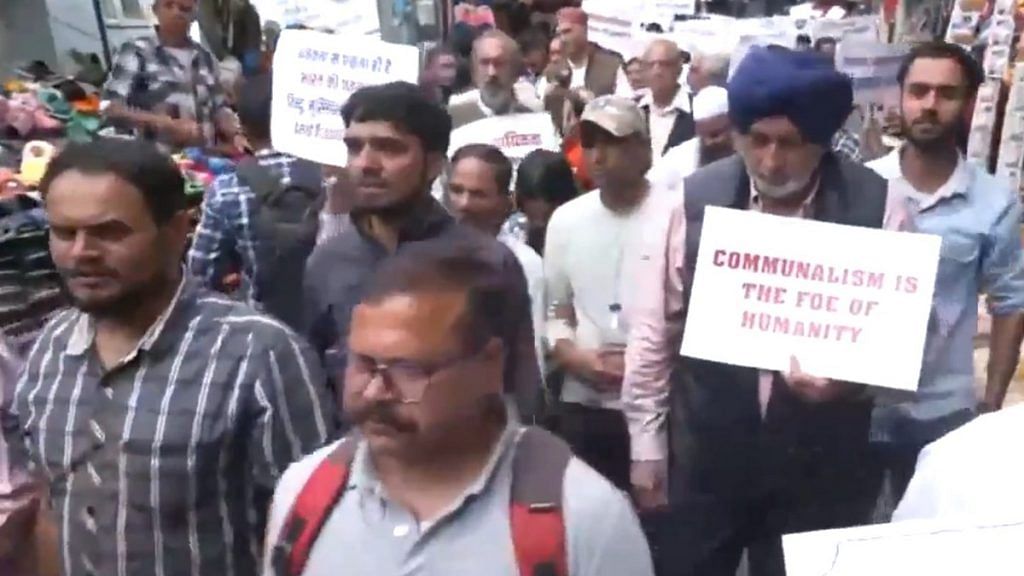
“This communal tension has been created because the administration is not doing its work. Why isn’t it doing its work?” asked Qasmi, who is also the representative of all mosques in the state.
He questioned why any Indian citizen shouldn’t be allowed to work in the state, as the Constitution guarantees this freedom.
“Do Hindu organisations not consider Himachal a part of the country?” he said angrily.
In Shimla, clothes vendor Alam walked up a hilly road with a friend, both carrying bundles of their wares. They discussed when it might be safe to return to the Kasumpti mosque for prayers, and how their sales have dropped—from 10 suits a day to just four.
Alam, who moved to Himachal from Bihar eight years ago, said the unrest has made it harder to support his family.
“We thought we could rely on the Congress, but where do we go now?” he asked.
(Edited by Asavari Singh)



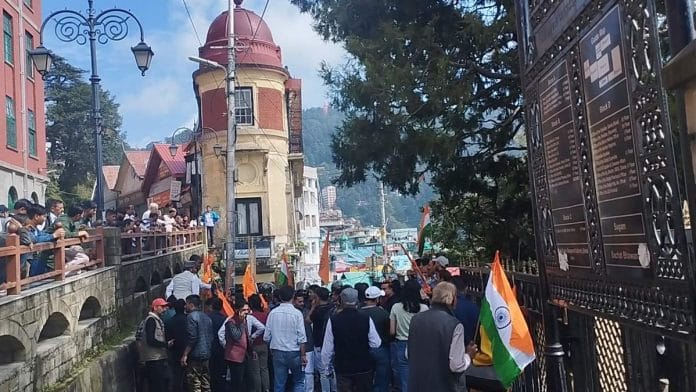



Radical Muslim needs to be eliminated.
But unfortunately most of Muslim are radical
Those who were never outraged at over 80,000 temples destroyed and over 3,000 mosques built on the sites of some of them have no right to cry foul when HP rises against illegal occupation of the land.
Mosque-free India on the cards
You are a leftist, anti- national page if you feel this is wrong.
I stay in a village in Kangra district, around Kotla area. There are five mosques that have been constructed in last 3 years within a radius of 5 KM of my house. These people occupy the forest land and then construct whatever that they wish.
Not to forget, there are even 2 churches that have been constructed within a radius of 10 KMs. My childhood friend has changed his name from Rahul Kumar to ‘Peter’.
Keeping this aside, this comment is just to highlight the scale of change and destruction of culture that has been ongoing here in HP. The confrontations have increased and blood-shed is becoming a new normal. The peaceful nature of the state is not there now. Readers have to understand the scale of things that are happening here in the state. There are buddhist communities in HP for over decades, I have not seen a single extra illegal occupation or new construction of temples by them, or any show of dominance. Why is it that these incidents or news are being only related to people that Fatima supports in her article here.
Full support to Himachalis. Only they know how the culture is getting destroyed by the intrusion of Islamic values.
Had the Muslim community remained peaceful and respectful, there would have been no issues. But they are calling and bringing their cousins and uncles and nephews from all parts of India and then showing their dominance in their area. There are 10-20 people staying in one rental house and then refusing to vacate the same when asked by the owner.
All the small works have taken over by them (which is a help to locals though) but the issue is coming when they are asserting control and power by showing majority (which is something they always accuse of Hindus).
I really feel like you have lost your mind The Print. Come to Shimla you will see sharanpuries all around being street vendors . That to without permit. We are not against a religion. We are against the imposed demographic change that is being brought for vote bank .
Column writer – Heena Fatima
Some select interviews/quotes;
Tikendra singh panwar – A lifer comrade who used to be active in student politics and later in shimla municipality when he grew too old to be spotted in university campus.
Ravi kumar Dalit – a rabble rouser and a participant in anti untouchability and caste issues and a candidate in municipal elections, a comrade in action
Portal – Print
Narrative – Paint hindutva as bad and muslim presence matter-of -factly. Whitewash anecdotal evidence of muslims asserting themselves disproportionately in politics and social and cultural affairs when they acquire critical mass. (Not only domestic but international as well where hindutvawadis are non existent).
All these are agents and enablers of expansion of a counter hindutva politicians and Islamists and they would like Himachali to be asleep on the wheel and fall down the cliff at some stage
There has been a rapid increase in the population of Muslims in Shimla and other towns of Himachal Pradesh. It is very evident from the mushrooming of mosques everywhere – usually illegally occupied government land or forest land. This is very concerning for the residents of the state. The upcoming Census will make the demographic shift absolutely clear.
Also, this has resulted in a substantial increase in violent criminal activities. More often than not, the recent migrants are the ones responsible for the violence due to their involvement in illegal activities ranging from money laundering to drug and arms trafficking,
Muslims are welcome but extremists are not.
But 99 percentage of muslims are extremists.
Story by Fatima! The theme becomes clear. I wish to tell her that when one knows the true motive of migrants, when one sees their actions, one is bound to react. Every living community will. She has cunningly called the resentment to be against mosque. It is actually against immoral migrants, soldiers of jehad. She should lecture her community.
The Muslim population has increased substantially in Himachal Pradesh. Census figures would certainly show a sudden spurt in recent years in the percentage of Muslims.
The fast changing demography has started ringing alarm bells.
These recent migrants to the state have mostly settled on govt land or abandoned private property. These illegal squatters are also indulging in various crimes ranging from supplying drugs to pickpocketing. Often times, the local population is intimated and harassed by these recent immigrants.
The Himachal govt must act swiftly to end this unwarranted migration. The squatters must be evicted from the state.